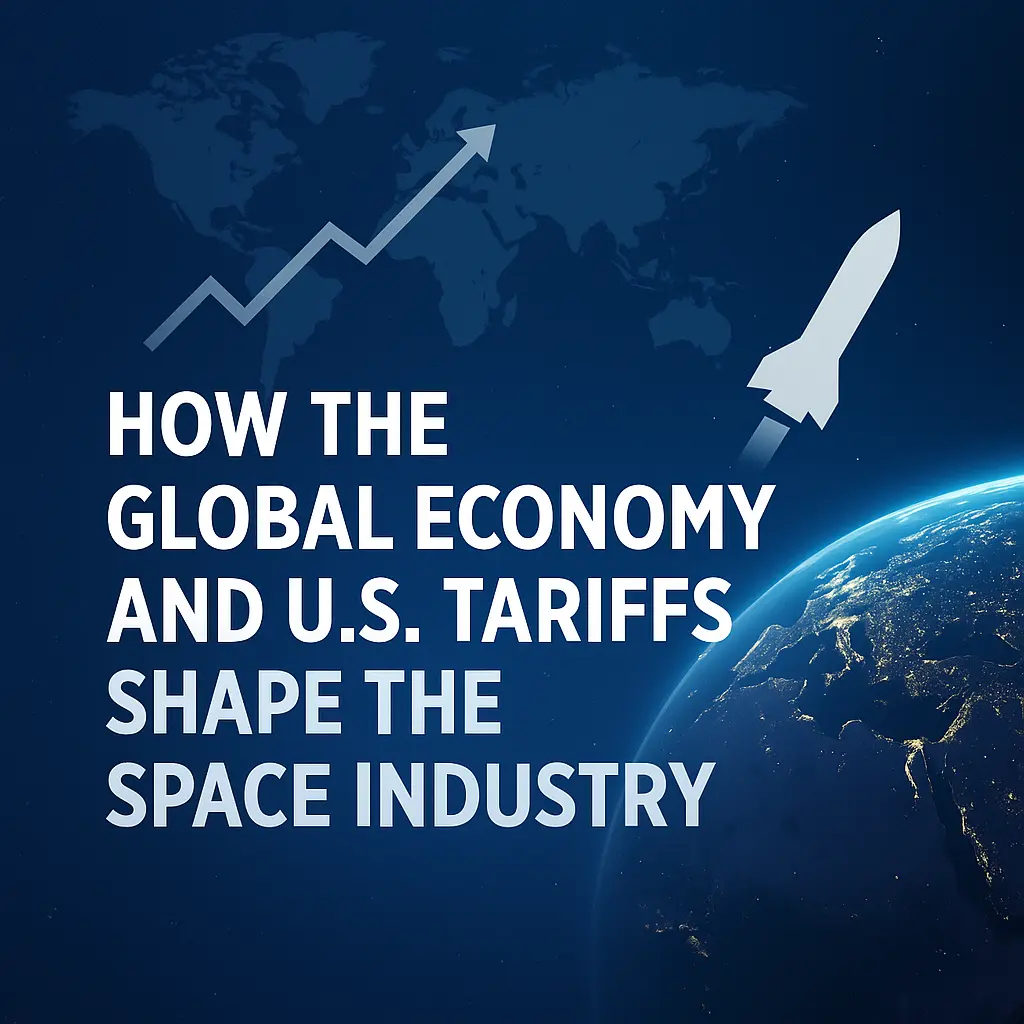As humanity pushes deeper into the cosmos, the space sector is no longer a distant scientific pursuit—it’s an integral part of the global economy. From broadband internet via satellite constellations to Earth observation for agriculture, defense, and climate change mitigation, space is now a mainstream economic domain. But like every other sector, it is intricately tied to the rhythms of the global economy and the decisions of national governments—particularly the economic levers pulled by the United States.
In this article, we explore how the health of the global economy propels or restrains the space industry and why U.S. tariffs—particularly on high-tech components—could send shockwaves far beyond Earth’s orbit.

The Space Sector: An Economic Ecosystem Beyond Borders
The modern space industry is no longer dominated solely by national space agencies like NASA or Roscosmos. Instead, we’ve entered an era of commercial space or “NewSpace,” where private companies build, launch, and monetize space technologies. This interwoven supply chain spans dozens of countries: a satellite might be designed in the U.S., use solar panels from Europe, launch on a rocket from India, and provide services to clients in Africa or Southeast Asia.
This global supply chain depends on several factors:
- Stable macroeconomic conditions: Investments in space are high-risk and long-term. Economic stability, especially low inflation, healthy capital markets, and predictable exchange rates, encourages long-term funding of space startups and infrastructure projects.
- Access to financing: Venture capital and institutional funding flow more readily when interest rates are low and investor confidence is high.
- Global demand for data and connectivity: As the world digitizes, space-based services (like Earth imaging, GPS, and global internet) become critical infrastructure.
Thus, when the global economy is strong, the space sector accelerates. When it falters, space becomes more vulnerable than traditional sectors, often seen as non-essential or speculative.
Tariffs: Ground Control to Globalization
Now let’s zoom in on a critical piece of the economic puzzle—tariffs, particularly those imposed by the United States, the world’s largest space economy.
In recent years, U.S. administrations have increased tariffs on high-tech components from strategic rivals, notably China. While these moves are often positioned as national security measures or tools to revive domestic manufacturing, they have clear ripple effects on the space sector.
1. Higher Costs Across the Supply Chain
Many satellites, rockets, and support technologies rely on specialized components from international partners. Tariffs on semiconductors, solar cells, or rare earth metals (used in propulsion and sensors) can inflate costs dramatically. For smaller space startups, a 10–25% increase in input costs can mean the difference between launch and liquidation.
2. Delays and Uncertainty
Tariffs often introduce regulatory uncertainty—will that critical chip be available next quarter? Will it be subject to a new export control or licensing requirement? This uncertainty disrupts project timelines, making it harder to plan multiyear missions.
3. Fragmentation of the Global Space Market
Tariffs accelerate the fragmentation of the global space supply chain into blocs. For instance, U.S. tariffs may push China and its partners to develop an alternative ecosystem—own launchers, satellite navigation systems, and even standards for data transmission. We are already seeing the rise of parallel systems like China’s BeiDou competing with the U.S. GPS.
In this scenario, countries caught in the middle (like those in Southeast Asia, Latin America, and Africa) face complex decisions: align with one ecosystem or juggle both? Either choice adds cost, complexity, and potential political friction.
4. Retaliatory Measures and Market Access
Tariffs rarely exist in a vacuum. If the U.S. imposes restrictions on space-relevant imports, other countries may retaliate by blocking U.S. firms from their space markets or excluding them from public tenders. For example, a foreign government investing in its first communications satellite might choose a non-U.S. provider due to trade tensions, even if a U.S. solution is technically superior.
The Road Ahead: Policy Recommendations
To ensure the space sector remains a driver of prosperity, policymakers should recognize the unique sensitivities of this industry:
- Promote stable, rules-based trade in space-related technologies while safeguarding critical national security interests through precise, narrowly defined controls—not broad tariffs.
- Encourage international standards and interoperability, especially in satellite communications, orbital debris management, and launch protocols.
- Fund domestic R&D to reduce dependency on foreign components, but do so in partnership with allies rather than through isolationist measures.
Final Thoughts: It’s All Connected
Space may be the final frontier, but it’s deeply tethered to Earth’s financial, political, and industrial dynamics. A healthy, interconnected global economy fuels innovation, cooperation, and expansion in space. Conversely, protectionist measures—especially poorly targeted tariffs—can slow the entire system down.
As stewards of this emerging economic domain, we must ask: do we want to build a space economy that is fragmented and territorial—or one that reflects the best of global cooperation?
In space, collaboration isn’t just idealistic. It’s necessary.


